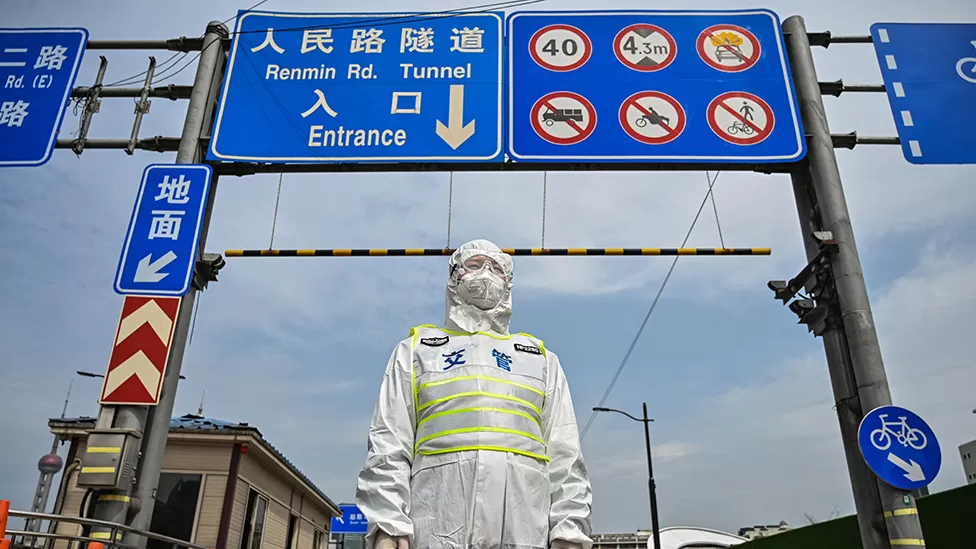
COVID-19 lockdowns in China. Foto has taken from www.bbc.com
STRATEGIC ASSESSMENT. Protests have proliferated throughout China, including in Beijing, Shanghai, and Wuhan, for example, as well as smaller towns and villages, in response to COVID-19 lockdowns and the country’s strict “zero COVID” policy, a signature initiative of Chinese President Xi Jinping. The lockdowns have been unpopular and have, in many cases, led to severe economic hardships, social isolation, and shortages of food, medicine, and basic necessities. There have also been several reports of likely preventable deaths caused by lockdowns and the overall “zero COVID” policy. Last week, a fire in Urumqi, the capital city of Xinjiang province, resulted in the deaths of at least ten people. Locals claim that roadblocks and other measures implemented as part of COVID-19 restrictions prevented first responders from reaching the scene in a timely manner. Videos of the fire, including what appears to be voices of residents screaming in fear and pain, have made the rounds on social media and caused widespread condemnation.
While the deadly fire may have sparked the vigils and demonstrations that swept across the country for the past days, frustrations about the Chinese Community Party’s (CCP) strict “zero Covid” policies have been mounting for months. In September, a bus carrying people on their way to government-mandated quarantine facilities crashed in southwestern China, killing 27 passengers and causing public outcry. In October, there was widespread anger over the death of a 14-year-old girl who reportedly died at a quarantine hospital. Last week, workers at China’s largest iPhone assembly factory on the Foxconn campus in the central Chinese city of Zhengzhou clashed with riot police over Covid-related and payment concerns.
The CCP has resorted to the classic authoritarian playbook, ramping up domestic messaging through state-controlled news outlets and blaming “foreign forces” for meddling in China’s affairs. Chinese citizens have braved draconian surveillance and law enforcement measures and taken to the streets shouting, “Lift the lockdown,” while many have held up blank white pieces of paper at various protests to symbolize how they are being censored. More recently, to prevent the Chinese population from seeing throngs of unmasked World Cup fans gathering and cheering in tightly packed stadiums in Qatar, the CCP has reportedly begun censoring pictures of the crowd. Videos of protests, as well as comments and posts in support of protests on Chinese social media platforms, have quickly been taken down by the CCP’s censorship apparatus. On social media platforms banned in China, like Twitter, what appears to be a large-scale spam campaign featuring pornographic content has been implemented to drown out information about protests.
The CCP has also started to deploy a heavy security presence in response to growing protests, with some leaked videos online portraying a harsh response from police and law enforcement. Citizens and journalists have been detained, as well as international journalists. A BBC journalist was detained for some time on the pretext that he was removed from the crowd to protect him from the possibility of contracting Covid; the Chinese Ambassador in London was summed to address this issue. At some of the protests, there have been calls for Xi to step down from power. Many worry that the police and security services are preparing an even more draconian response. There have been reports that police are searching protesters’ phones, looking for banned apps like Twitter and Instagram. Some Chinese citizens have attempted to evade censors by using dating apps and banned encrypted messaging apps like Telegram. For its part, the government has employed the trappings of its electronic surveillance state, including facial recognition software and troves of data collected as part of its pandemic response efforts, to locate protesters and target them for arrest.
While many other parts of the world have seen a decline or plateau in COVID-19 cases, China has reported record numbers of daily cases, recently as high as 40,000 cases per day and approaching nearly a half million cases in the month of November alone. About 80 cities across China are experiencing outbreaks, as well as in many rural areas where vaccines have not been widely distributed, particularly among elderly populations. In response, the government has implemented strict quarantines and tight restrictions on freedom of movement and travel. While the government initially sought to ease some of the restrictions, it has since reversed course, with one-third of China’s population under either partial or complete lockdowns, adding to the mounting frustration. Much of the prevalence has been attributed to the weaker effectiveness of China’s Sinovac vaccine, which does not employ the mRNA technology, though a Chinese mRNA vaccine has reportedly been approved for the first time in Indonesia. Moreover, low rates of vaccination among the elderly and low levels of immunity in communities have also reportedly contributed to this rise in cases.
Political protests are not unheard of in China, but they tend to be localized and/or specific in nature, such as centering on labor rights, environmental issues, or local governance malpractices. The recent protests spreading across China, however, are unique in that they bridge commonly separated socio-economic groups and span geographical areas. Protesters in Shanghai are showing support for ethnic minorities in Western China. Middle-class students are protesting in solidarity with blue-collar factory workers. The protests have also sprung up at elite universities throughout the country, including Peking University and Tsinghua University, Xi’s alma mater, echoing the Tiananmen Square protests of 1989. Indeed, some China watchers have described the protests as the most serious internal threat to the CCP since 1989, when the months-long protests were ultimately quelled with brute military force. However, it remains to be seen if the protests will be nationwide and sustained or if they will fade under the pressure of heavy security and censorship





